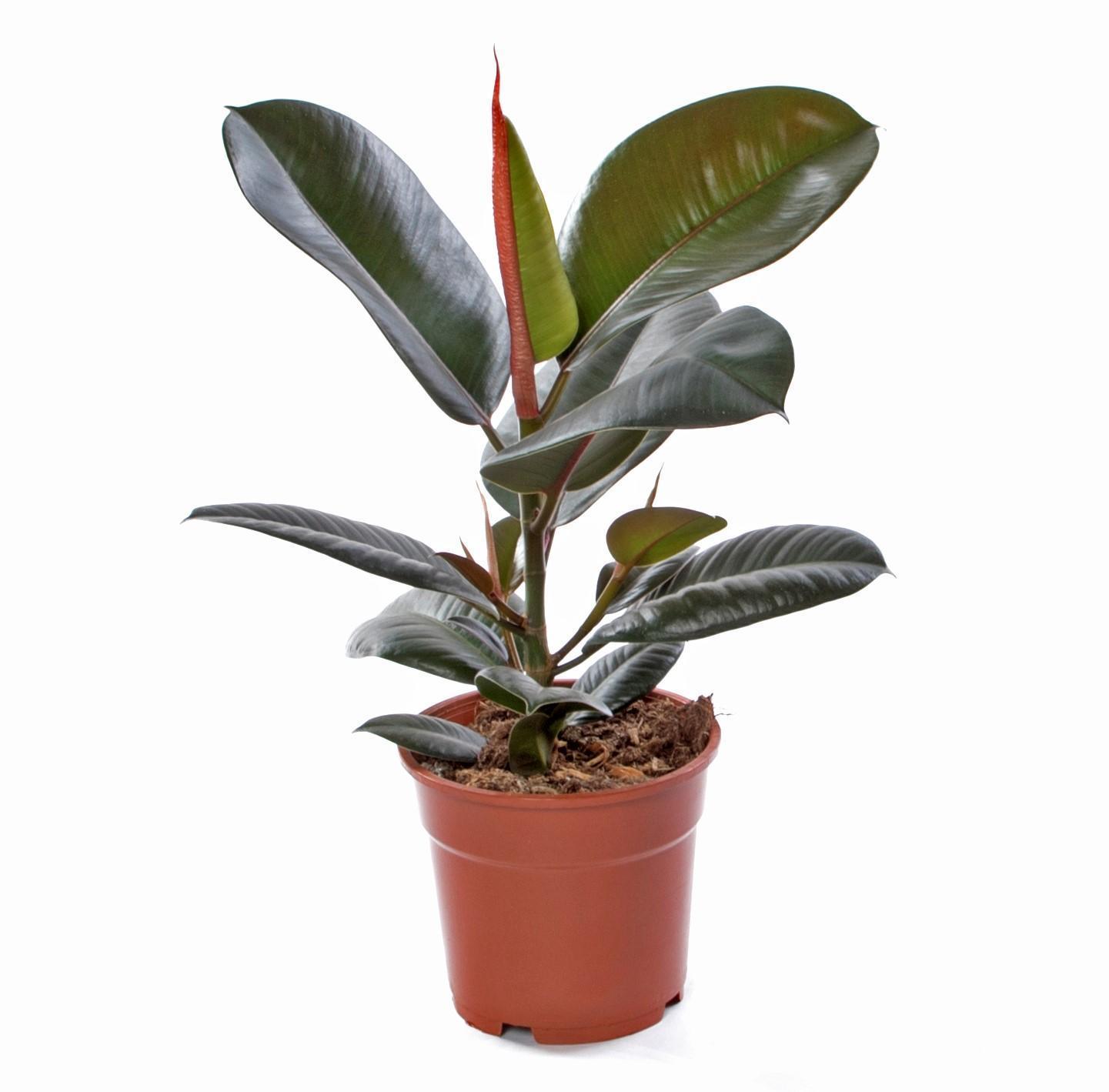
Borracheira Ficus Elástica ‘Robusta’ VIPLANT
Ficus elastica, as the name of course suggests, is part of the Ficus or fig family. In the great outdoors, the rubber plant has been known to reach up to 30 metres in height.. The brown exterior of the pest makes it hard to spot on a leaf and they tend to blend in well with their surroundings.
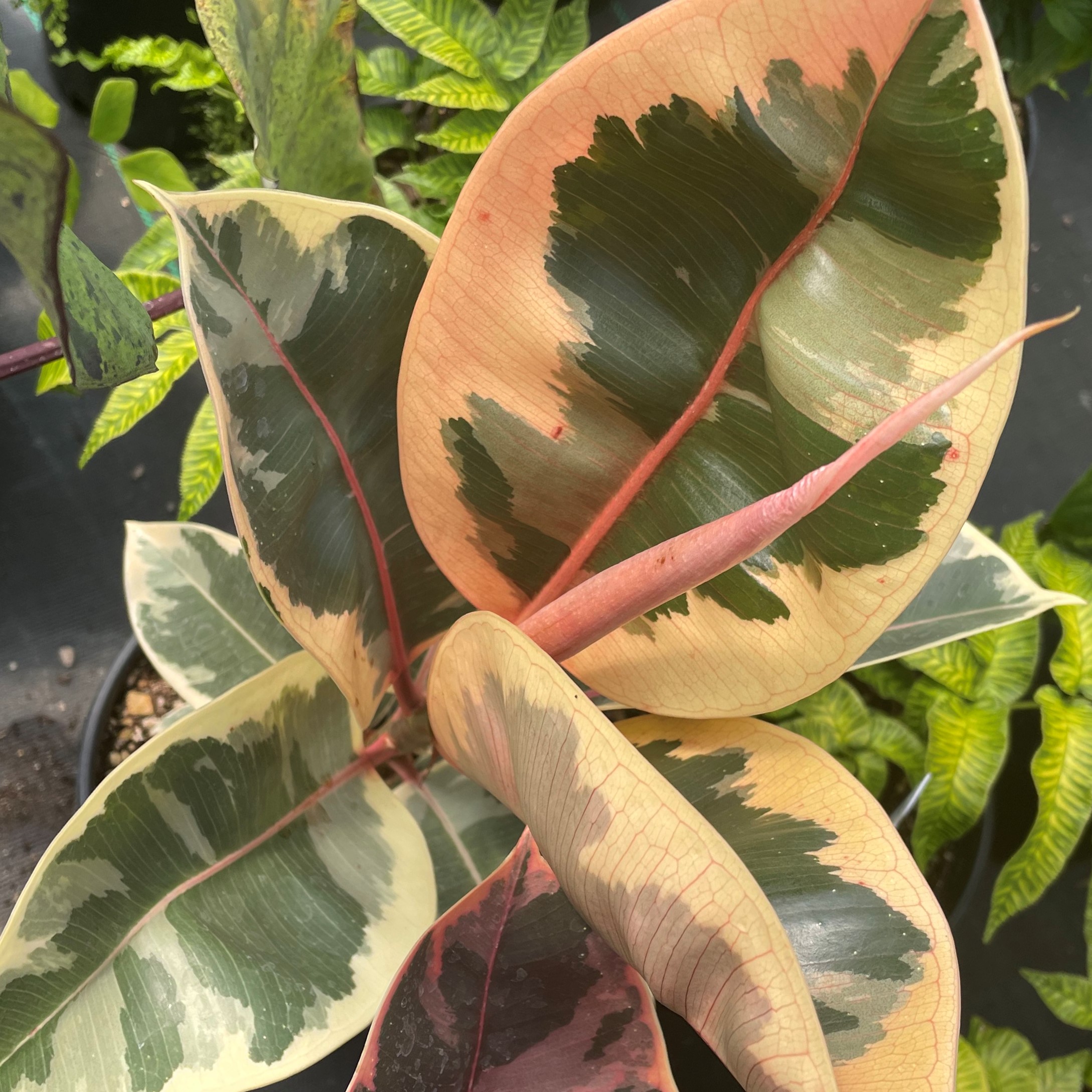
Ficus elastica 'Tineke' Variegated Rubber Tree (4.5" Pot) Little Prince To Go
Ficus spp.. The Ficus genus encompasses a plethora of beautiful and fascinating plants, from dramatic fiddle-leaf figs (F. lyrata) to the Great Banyan tree in India, a F. benghalensis specimen that spreads out to cover nearly five acres.. The species commonly grown as houseplants like rubber trees (F. elastica) and weeping figs (F. benjamina) are in the same genus as the fig trees cultivated.
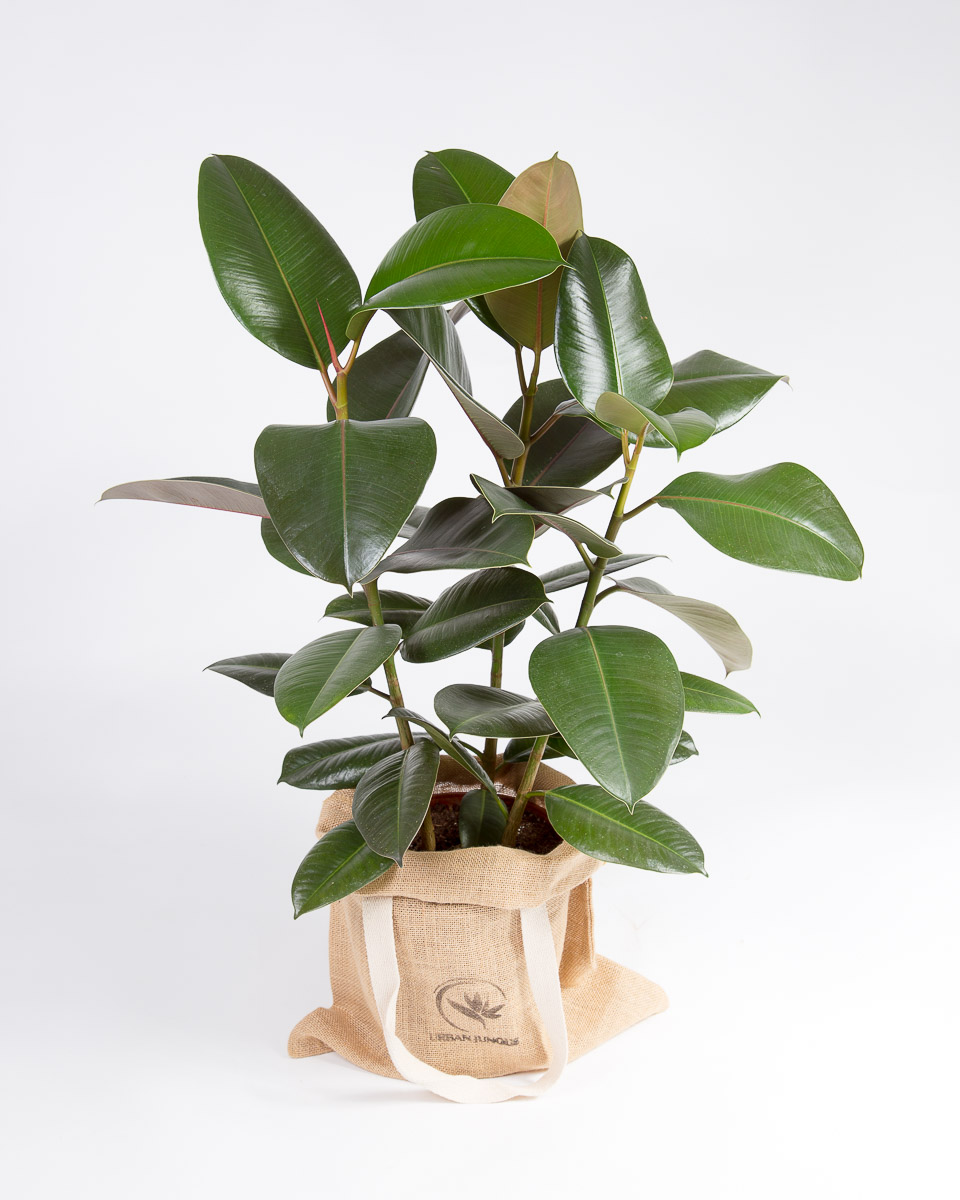
Ficus elastica Robusta Urban Jungle Comprar Plantas Online
Ficus elastica 'Ruby' plants need rich soil that drains freely. Preferred soil pH levels are between 5.0 and 7.0. Succulent potting soil or indoor potting soil is recommended. To increase the soil's drainage properties, simply add sand or perlite into the soil mix. Rubber Trees grow best in a free-draining potting mix.

Ficus Elastica Burgundy The Grow Centre
Ficus elastica 'Tineke': 'Tineke' is a variegated cultivar with elongated, leathery leaves splashed with hues of green, cream, and pink. This eye-catching combination of colors adds a.

Ficus elastica GLISSANDO Garden Center
Ficus elastica plants grow best in bright light but protected from direct sunlight.An ideal location for a compact rubber plant would be an east-facing windowsill. If you have to place a Ficus plant pot in a west- or south-facing room, keep it well away from the window or place behind a sheer curtain.. All types of rubber plants (Ficus Elastica) need at least medium light to grow fast.

Ficus elastica Rubber Fig The Seed Vine
The most common varieties for growing indoors include Ficus elastica 'Tineke', Ficus elastica 'Burgundy', Ficus elastica 'Ruby', and Ficus elastica 'Robusta'.. Keep them away from cold windows or exterior doors in winter. More than a brief exposure to temperatures below 50°F can cause leaves to turn yellow and then brown before they drop.
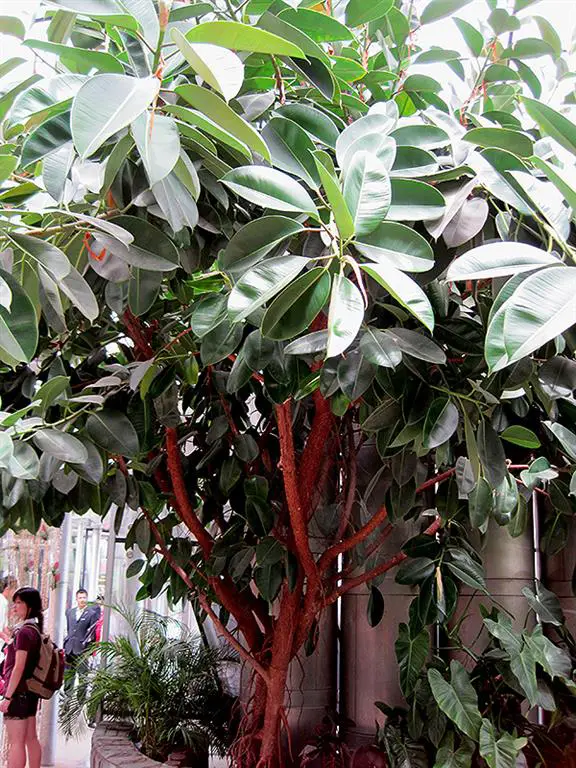
Características del árbol del caucho (Ficus elastica) Consejos para mi huerto
Ficus elastica 'Tineke': A mix of green and white leaves, occasionally with a pinkish hue. Ficus elastica 'Ruby': Leaves have a unique reddish-pink tone. Ficus elastica 'Belize': Features green leaves with a lighter centre and pinkish-red veins. Ficus elastica 'Burgundy': Recognised by its dark burgundy or almost purple leaves.

Borracheira Ficus Elastica ‘belize’ VIPLANT
Ficus elastica 'Doescherii' is another variegated variety of rubber plant which is grown for its decorative foliage. The foliage is narrower than most rubber plant types, and feature eye-catching patterns of green, yellow, white and grey. To add to the interest, it has pink midribs. 3. Ficus elastica 'Ruby'.

Ficus Elastica FileStarr 0709069082 Ficus elastica.jpg Wikimedia Commons Rubber Plant
An oblong fig, sessile, in pairs or crowded, green with darker flecks maturing to yellow, to 1/2 x 1/4"; bract bases join to form thickened pseudostalk. Minute, axillary, unisexual, enclosed in fleshy receptacle (fig), entered by apical orifice and pollinated by fig wasps. Broad, shiny attractive leaves.
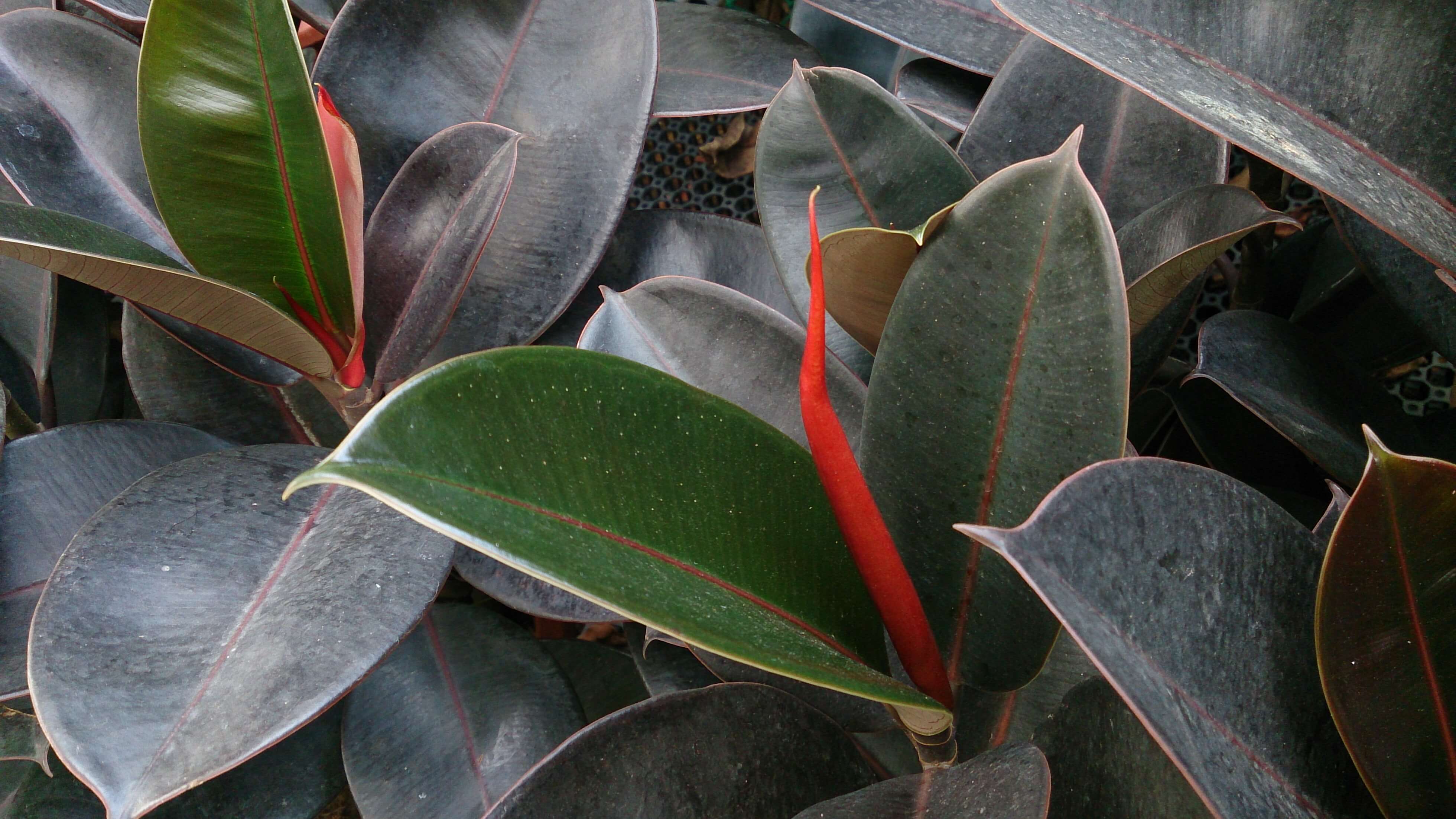
Ficus elastica Riverside Garden Centre
Rubber Plant Care. To care for Ficus elastica a well-draining peat-based potting mix and a temperature between 65 to 85°F (18-29°C) is optimal. Provide a humidity of 50% or more and fertilize every 2 months using a balanced liquid fertilizer with NPK 10-10-10 or 20-20-20. Water weekly in the growing season when the top 2-3 inches of soil (5-7.
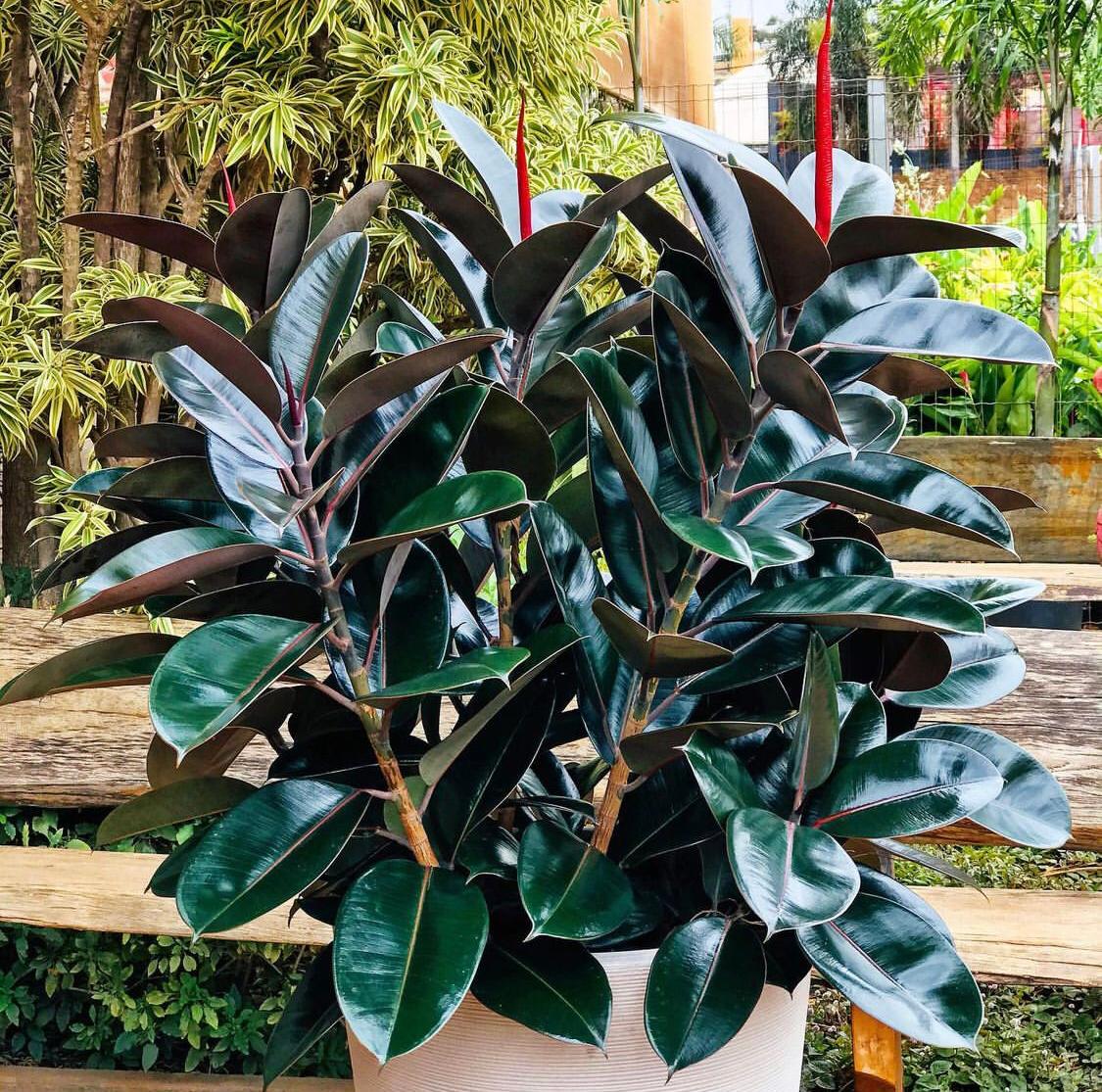
Ficus Elástica Saiba tudo sobre essa verdinha no Blog
Select a cutting of around 6 inches from a healthy-looking stem with at least four leaf nodes. Use a clean, sharp blade to make the cutting. Remove the leaves at the bottom of the cutting, leaving one leaf at the top. That way energy will be directed to the new root growth rather than existing foliage.
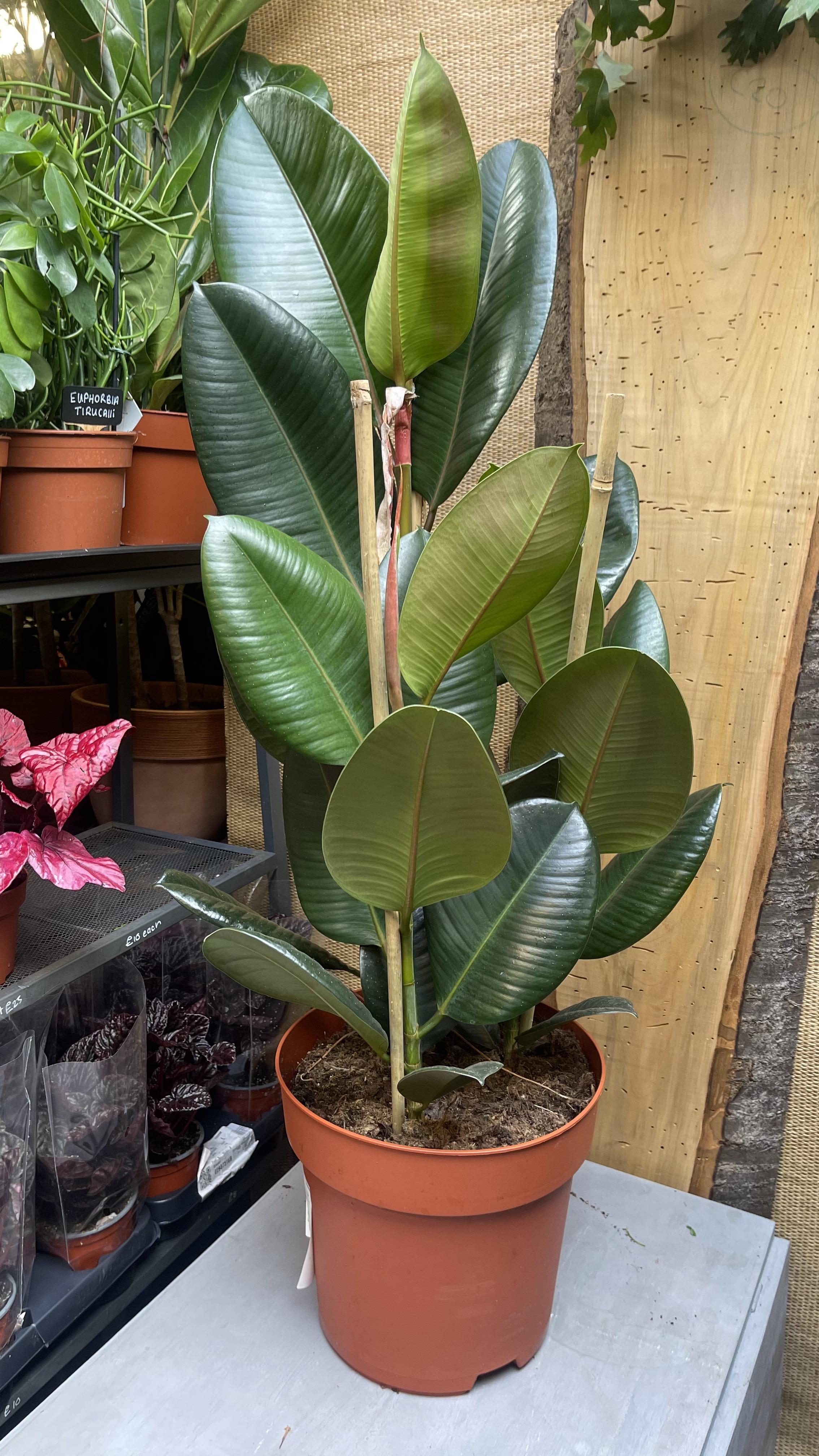
Ficus Elastica Robusta Rubber Plant
The common name of Ficus elastica, rubber fig tree, refers to the milky white sap that is tapped from the tree's bark ( Whistler, 2000; Starr et al., 2003 ). The name Ficus elastica was published by Roxburgh in 1814. The species is often cited as F. elastica Roxb.

PlantFiles Pictures Rubber Tree 'Burgundy' (Ficus elastica) by IslandJim
Ficus elastica /Rubber Plant. The rubber plant, also known as Ficus elastica, is a houseplant native to Southeast Asia. Ficus elastica is a Latin botanical name for the rubber plant. The name Ficus comes from the Latin word for fig, and elastica refers to the elastic properties of the plant's sap. Its sap can actually be used to produce rubber.
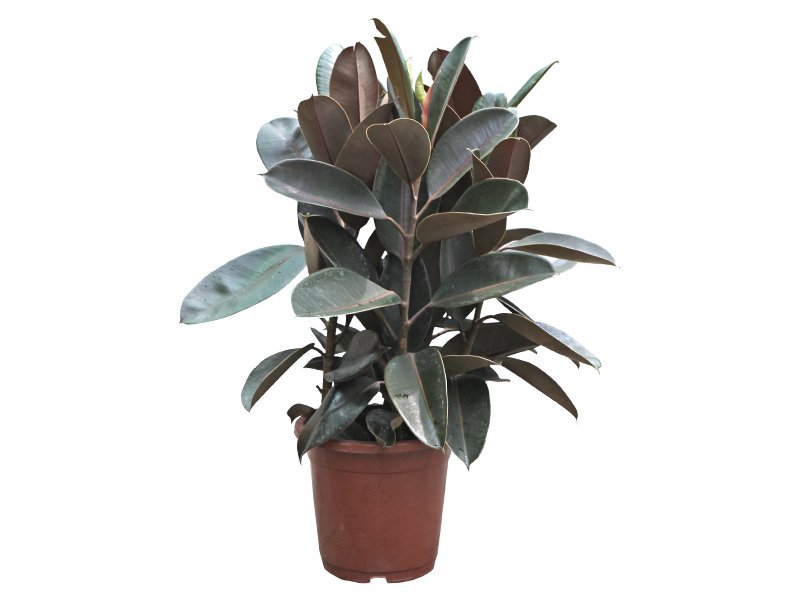
Ficus Elastica Outdoor Dubai Garden Centre Shrubs Dubai Garden Centre
Ficus elastica, the rubber fig, rubber bush, rubber tree, rubber plant, or Indian rubber bush, Indian rubber tree, is a species of flowering plant in the family Moraceae, native to eastern parts of South and Southeast Asia.It has become naturalized in Sri Lanka, the West Indies, and the US state of Florida. Despite its common names, it is not used in the commercial production of natural rubber.

Ficus Elastica Floral Soul
The tiny green flowers Ficus elastica produces line the walls of the synconia or immature caprifigs, inedible fruits less than half an inch across that form on the branches in the spring and summer.. Once the leaf has fully opened, the red exterior may darken slightly, and eventually, it'll fall off. Photo via Alamy.

Ficus elastica tineke Plantasvillor
Allow the cutting to callus over for about 24 hours. Fill the plant pot with potting soil and moisten it well. Use your finger to poke a hole a few inches into the soil surface. Plant the cutting in the soil so that the node is below the soil line. Put the cutting in a warm spot that gets bright, indirect light.